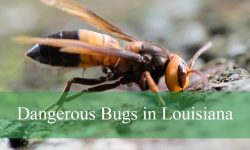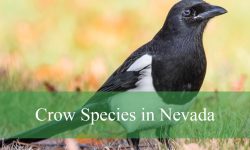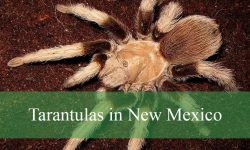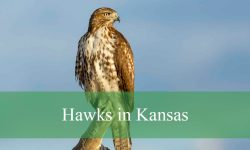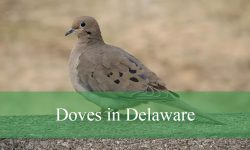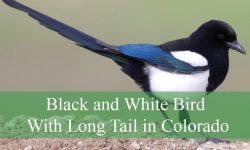Indiana is home to a dazzling array of blue birds that brighten up forests, fields, and backyards throughout the state. Their vivid feathers and lively songs bring a special charm to every outdoor adventure, capturing the hearts of birdwatchers and nature enthusiasts alike. Each sighting feels like a little moment of magic.
From the bright indigo of the Eastern Bluebird to the shimmering sheen of the Tree Swallow, these birds showcase an incredible range of colors and behaviors. Some flit through dense woodlands, while others glide over open water or perch boldly in suburban trees. No matter the setting, their presence is unforgettable.
This guide introduces 17 stunning blue birds found in Indiana, complete with vivid photos and helpful identification tips. It’s a perfect starting point for exploring the diversity of the state’s birdlife and deepening your appreciation for the natural world.
Types of Blue Birds Found in Indiana
Eastern Bluebird (Sialia sialis)
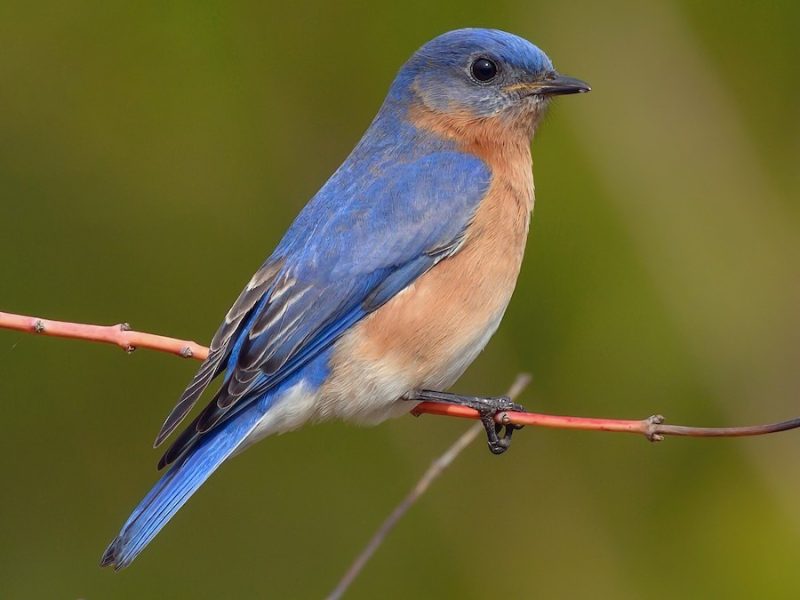
The Eastern Bluebird is a small, vibrant thrush recognized by its deep blue back, wings, and head, paired with a rusty red throat and chest. Females are more muted in coloration, with grayish-blue wings and a lighter brownish-orange breast. Adults measure about 6.5–7 inches long with a wingspan of around 9.8–12.6 inches. Their bodies are compact with a slightly rounded head and short, straight black beak.
These birds are known for their soft, melodious warbles and whistled phrases, often sounding like “cheer cheerful charmer.” They typically nest in natural tree cavities or man-made nest boxes, laying 3 to 7 pale blue or sometimes white eggs per clutch. During the breeding season, they may raise two or even three broods. Males perform a fluttering display flight and sing persistently to attract females in early spring.
In Indiana, Eastern Bluebirds are found in open woodlands, meadows, farmlands, and suburban areas, especially where nest boxes are available. They are year-round residents in southern Indiana, though many migrate from the north in winter. Their populations have rebounded strongly in recent decades thanks to conservation efforts and widespread use of nesting boxes.
Mountain Bluebird (Sialia currucoides)
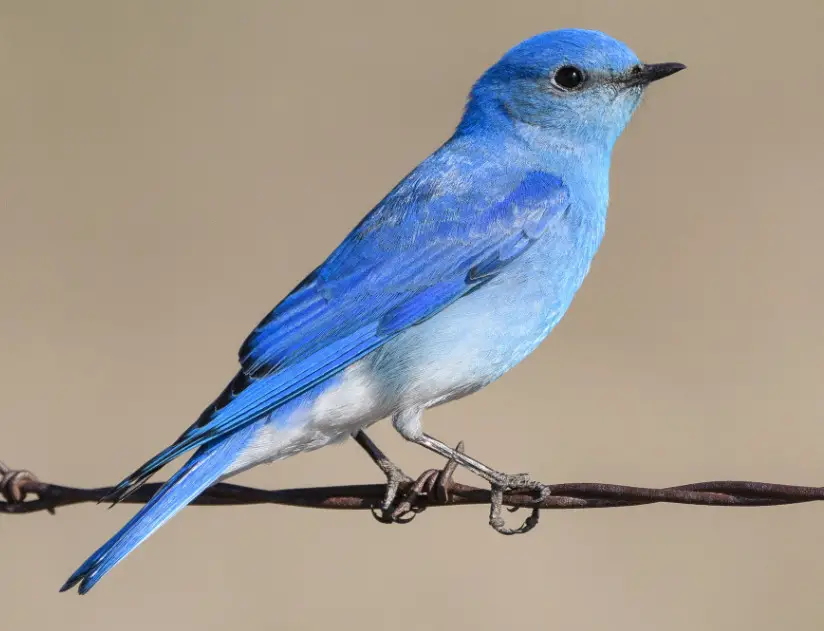
The Mountain Bluebird is a striking sky-blue bird with a slender build and long wings. Males are entirely bright blue, while females have a more subdued appearance, featuring gray bodies with hints of blue on the wings and tail. They measure about 6.3–7.9 inches in length and have a wingspan of approximately 11–14.2 inches, making them slightly larger than the Eastern Bluebird.
These birds have a soft, low warbling song and short calls, often described as “few” or “hew.” Unlike other bluebird species, Mountain Bluebirds frequently hover when foraging, often catching insects mid-air. They nest in cavities, including old woodpecker holes and nest boxes, laying 4 to 8 pale blue eggs. Males often arrive at breeding sites first and begin singing to stake out territory and attract mates.
Though not native to Indiana, Mountain Bluebirds are rare but occasional visitors during migration, especially in open grasslands or prairie-like habitats in the western part of the state. Their primary range lies in the western United States, but sightings in Indiana are increasing, likely due to shifting migration patterns and changes in land use.
Western Bluebird (Sialia mexicana)
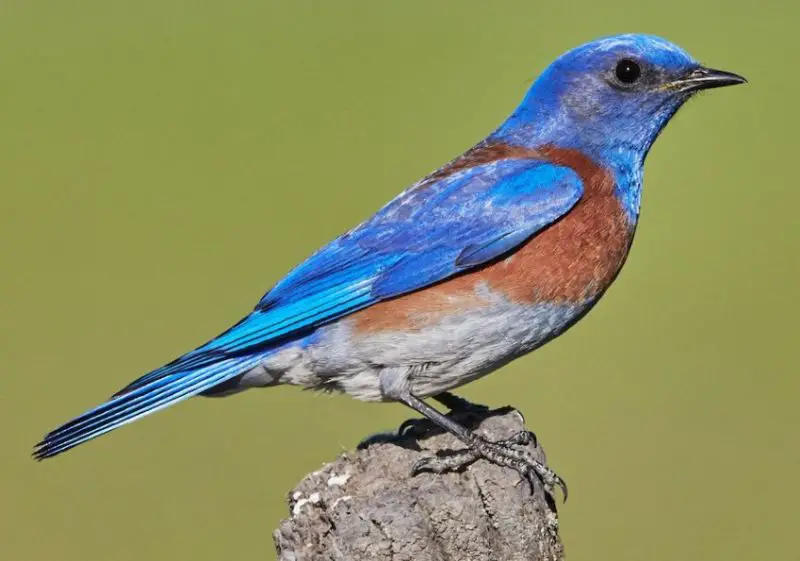
The Western Bluebird is a small songbird with rich blue coloring on the head, back, and tail, combined with a rusty orange breast and flanks, and a grayish belly. Females are grayer overall with tinges of blue in the wings and tail. Adults typically measure around 6.3–7.5 inches long with wingspans between 11 and 13 inches. They have a slightly stockier build compared to the Eastern Bluebird.
Their songs are sweet and short, consisting of mellow “chew” or “chur” notes repeated softly. Western Bluebirds are social and often form small flocks during non-breeding seasons. They nest in tree cavities or boxes, usually laying 4 to 6 pale blue eggs. Males assist in feeding and defending the nest, and juveniles sometimes help raise subsequent broods in cooperative family groups.
Western Bluebirds are considered vagrants in Indiana, meaning they appear irregularly and unpredictably, typically during fall or winter migration. Most of their native range lies in the western U.S., but occasional sightings in Indiana have been documented in open country, meadows, and old field edges. Birdwatchers consider these sightings exciting and rare.
Indigo Bunting (Passerina cyanea)
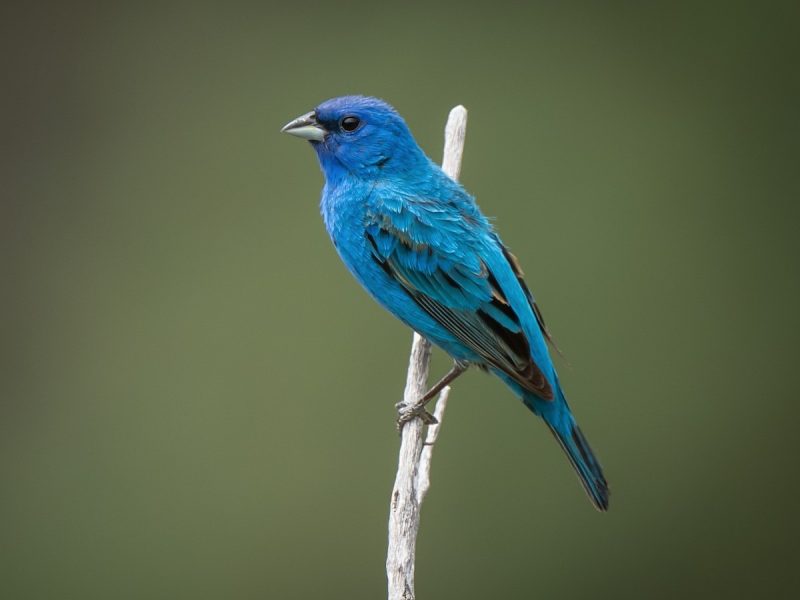
The Indigo Bunting is a small, brilliant blue songbird with a conical bill and short tail. Males are entirely vibrant indigo blue in breeding plumage, while females and juveniles are a warm brown with faint streaking. Adults measure about 4.5–5.1 inches in length and have a wingspan of approximately 7.5–8.7 inches. Their compact size and color make them stand out during summer.
Their song is a cheerful, warbling series of paired notes that sound like “what! what! where? where? see it! see it!” Males sing persistently throughout the day from high perches to mark territory and attract mates. Indigo Buntings nest in low shrubs or dense vegetation, laying 3 to 4 pale blue eggs. They are monogamous during the breeding season, and both parents feed the young.
In Indiana, Indigo Buntings are common summer residents found in woodland edges, overgrown fields, hedgerows, and roadsides. They migrate to Central America and the Caribbean for winter, traveling primarily at night. Their vivid coloration and joyful song make them a favorite among backyard birdwatchers and nature enthusiasts.
Blue Grosbeak (Passerina caerulea)
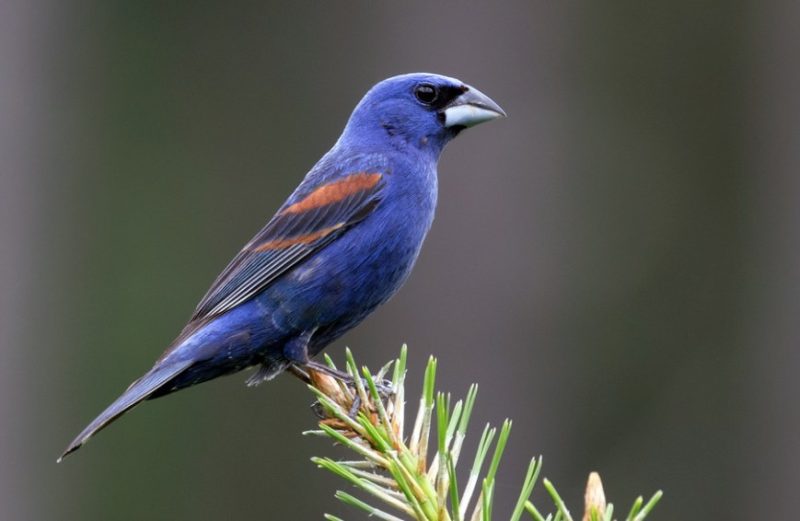
The Blue Grosbeak is a medium-sized songbird with rich blue plumage and two bold chestnut wing bars. Males are deep blue with a large, silver-gray beak, while females are brownish with subtle blue hints and wing bars. They range from 5.5 to 7.5 inches in length with wingspans of about 10–11 inches. Their thick, seed-cracking bill is a distinguishing feature.
They produce a musical, warbling song that resembles a complex series of slurred notes and whistles. Males often sing from prominent perches during the breeding season. Blue Grosbeaks nest in dense brush or thickets, laying 3 to 5 pale blue eggs per clutch. Females handle most nesting duties, while males help feed the chicks once hatched.
In Indiana, Blue Grosbeaks are typically found in the southern and central parts of the state during summer. They favor shrubby habitats, young forests, and brushy fields. Although not as common as the Indigo Bunting, they are slowly expanding their range northward, and sightings in Indiana have become more frequent in recent years.
Cerulean Warbler (Setophaga cerulea)

The Cerulean Warbler is a small, canopy-dwelling songbird known for its sky-blue upperparts and white underparts. Males display bold blue streaks on their sides and a dark blue necklace across the upper chest, while females are more greenish-blue with a faint white eyebrow. These warblers measure about 4.3 inches in length with a wingspan of 7.9 inches, making them one of the smaller blue birds in Indiana.
Males sing a fast, buzzy trill that rises in pitch, often heard high in the treetops. This species is known for its secretive nesting habits, building cup-shaped nests in the upper canopy of mature deciduous forests. Females lay 3 to 5 eggs and handle incubation alone, while both parents feed the young. Cerulean Warblers are among the fastest-declining songbirds in North America due to habitat loss.
In Indiana, Cerulean Warblers are found primarily in large, unfragmented tracts of mature hardwood forest, especially in the southern part of the state. Their presence is considered an indicator of high-quality forest habitat. They migrate to the Andes of South America during the winter, making their time in Indiana relatively short but significant.
Black-throated Blue Warbler (Setophaga caerulescens)
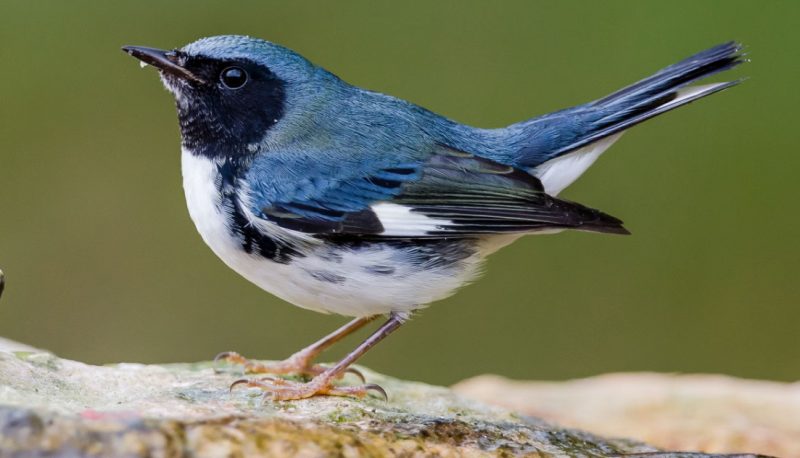
The Black-throated Blue Warbler is a striking woodland warbler. Males are unmistakable with deep midnight-blue backs, white bellies, and bold black throats and faces. A small white wing patch—known as a “pocket handkerchief”—is often visible. Females, by contrast, are olive-brown with a hint of blue on the tail and wings. These birds are about 5.1 inches long with a wingspan of 7.5 to 7.9 inches.
Their song is a soft, rising “zoo-zoo-zoo-zweee,” which males repeat frequently during the breeding season. Black-throated Blue Warblers build cup-shaped nests low in shrubs or saplings, often less than four feet off the ground. Females typically lay 3 to 4 eggs and provide most of the care, while males defend the territory aggressively with song.
This species is more commonly found in eastern forests but passes through Indiana during migration in spring and fall. They prefer dense understory habitats and are more often seen in forested parks or preserves during their journey to and from their breeding range in the Appalachians and wintering grounds in the Caribbean.
Blue-gray Gnatcatcher (Polioptila caerulea)
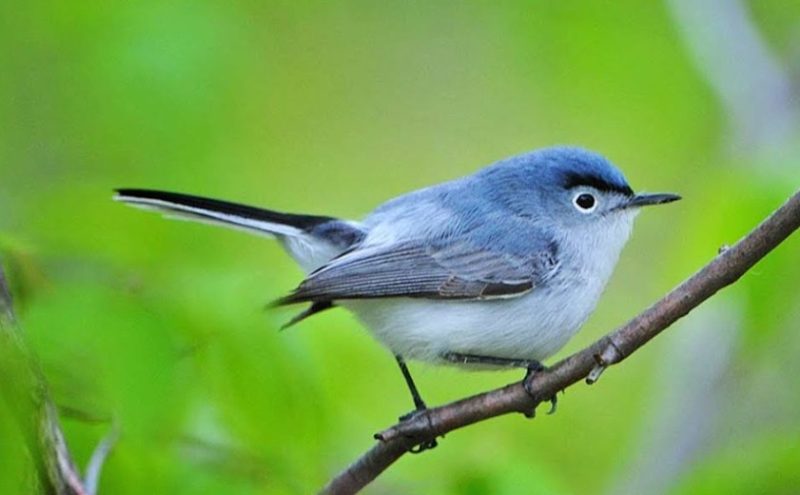
The Blue-gray Gnatcatcher is a tiny, slender songbird with soft bluish-gray plumage, white underparts, and a long, expressive black tail edged in white. Males develop a thin black line over the eye in the breeding season, giving them a slightly “angry” expression. These birds are about 4–4.5 inches long with a wingspan of 6.3 inches, and they weigh less than a quarter of an ounce.
They produce high-pitched, squeaky calls and a jumbled song of sharp notes. Blue-gray Gnatcatchers are energetic foragers, often flicking their tails and darting through foliage in search of insects. Their nests are tidy, camouflaged cups of plant fibers and spiderwebs, typically placed on horizontal branches. Females lay 3 to 5 eggs per brood and may raise multiple broods per season.
In Indiana, these birds are widespread during the warmer months and inhabit woodlands, forest edges, and shrubby areas. They are one of the first neotropical migrants to arrive in spring. Their active behavior and distinctive long tail make them easy to identify as they move swiftly through the treetops.
Northern Parula (Setophaga americana)

The Northern Parula is a tiny warbler with a colorful appearance. Males have bluish-gray upperparts, a greenish patch on the back, yellow throats and chests, and a dark band across the breast. Females are paler but similarly patterned. Measuring only 4.3 inches in length with a wingspan of around 6.3 inches, they are among the smallest warblers in North America.
They sing a buzzy, ascending trill that ends abruptly, often described as “zeeeee-up.” Northern Parulas are unique among warblers for their nesting preference—suspending their nests in hanging moss or lichens, especially beard lichen. They typically lay 3 to 7 eggs, and both parents share feeding duties once the chicks hatch.
In Indiana, Northern Parulas breed in moist, mature woodlands with plenty of hanging moss or dense canopy foliage. They are more frequently found in southern Indiana but also migrate through the rest of the state in spring and fall. Despite their size, their bright plumage and lively song make them a favorite among birders.
Purple Martin (Progne subis)
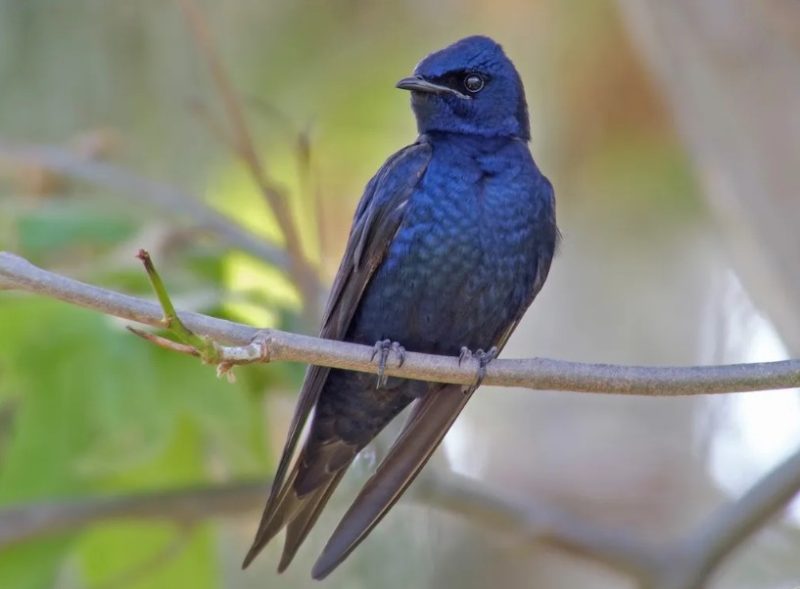
The Purple Martin is the largest swallow in North America, with glossy, iridescent blue-black plumage in males. Females and juveniles are duller with grayish bellies and lighter throats. They measure 7.5 to 8.7 inches in length with a wingspan of about 15 inches. These birds have long, pointed wings and a slightly forked tail, built for agile flight.
Purple Martins produce a rich variety of gurgling, chirping, and chortling sounds. They are highly social and prefer to nest in colonies, often using man-made birdhouses or “martin condos.” Each pair raises 4 to 6 young, and both parents are involved in incubation and feeding. Martins are aerial insectivores, catching insects on the wing with impressive speed and precision.
In Indiana, Purple Martins are common summer residents, especially in open areas near water, fields, or suburban neighborhoods with nesting structures. They rely heavily on human-provided housing east of the Rocky Mountains, and many residents maintain special houses just to attract them. Their return each spring is often celebrated as a sign of the changing seasons.
Tree Swallow (Tachycineta bicolor)
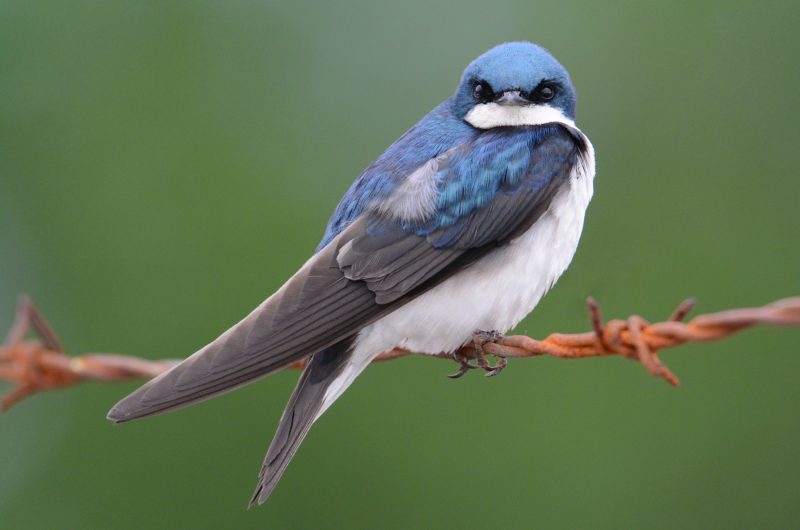
The Tree Swallow is a small, sleek songbird with iridescent blue-green upperparts and clean white underparts. Males have more vibrant coloration than females, though both sexes show a distinct contrast between their shiny backs and white fronts. These swallows measure about 5.5 inches long with a wingspan of 11.8–13.8 inches and have long, pointed wings and slightly forked tails.
Their vocalizations are a mix of bubbly, twittering notes, often heard as they dart through the air in search of flying insects. Tree Swallows nest in cavities, often using old woodpecker holes or nest boxes near water. They line their nests with feathers and lay 4 to 7 white eggs. Both parents participate in feeding the young, and fledging typically occurs within three weeks.
In Indiana, Tree Swallows are widespread during the breeding season, especially near wetlands, open fields, and lakes. They arrive in early spring and are among the first swallows to return. Their aerial acrobatics and glossy plumage make them a favorite among birdwatchers and nature photographers.
Barn Swallow (Hirundo rustica)
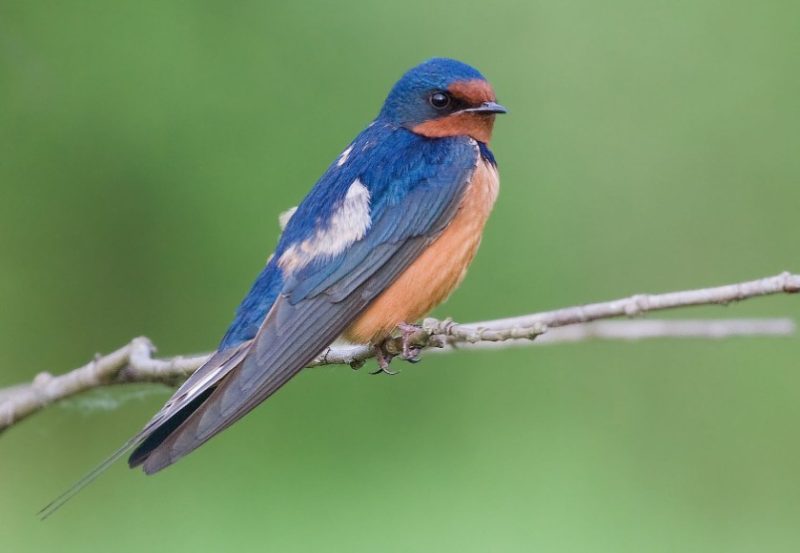
The Barn Swallow is the most familiar swallow in North America, recognized by its long, deeply forked tail and iridescent blue back. The underparts are a warm buff or reddish color, and the throat is usually a deep chestnut. They measure about 6.7 inches long with a wingspan of 11.4–12.6 inches. Their long tail streamers are particularly striking in flight.
Their song is a cheerful series of twitters, warbles, and mechanical-sounding trills. Barn Swallows build cup-shaped mud nests on human-made structures like barns, bridges, and sheds. They lay 4 to 5 speckled eggs, and both parents share incubation and feeding duties. These birds are agile fliers and feed exclusively on flying insects.
In Indiana, Barn Swallows are abundant during spring and summer, especially in rural and agricultural areas. They return from South America each year to breed and are often seen swooping low over fields and ponds. Their close association with humans has helped maintain their populations, despite declines in other aerial insectivores.
Belted Kingfisher (Megaceryle alcyon)

The Belted Kingfisher is a stocky bird with a large head, shaggy crest, and thick, pointed bill. Males have blue-gray upperparts and a white breast with a single blue band, while females add a rusty band across the belly, making them one of the few bird species where females are more colorful than males. They measure 11 to 13 inches in length with a wingspan of about 19–23 inches.
Their call is a loud, rattling “klek-klek-klek,” often heard as they fly swiftly over rivers and lakes. Belted Kingfishers dig burrows in riverbanks or sandy embankments for nesting, sometimes several feet deep. They lay 5 to 8 white eggs, and both parents help incubate and feed the young. These birds primarily feed on fish, which they catch by diving from a perch.
In Indiana, Belted Kingfishers are found year-round near rivers, streams, ponds, and lakes. They are solitary and territorial outside of breeding season. Their fishing prowess and distinctive call make them easy to identify, especially near bodies of water.
Little Blue Heron (Egretta caerulea)
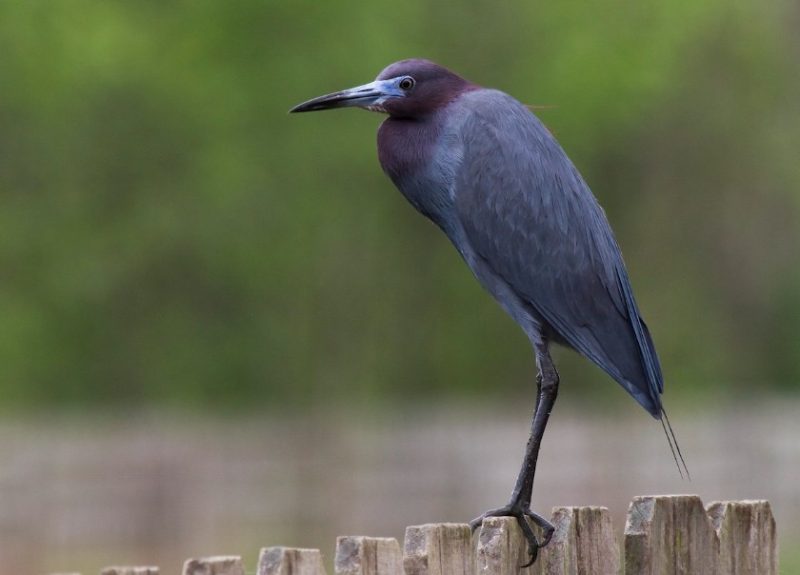
The Little Blue Heron is a medium-sized wading bird with slate-blue plumage and a maroon neck in adults, while juveniles are entirely white during their first year. They measure about 24 inches long with a wingspan of 40 inches. Their slender build, dark legs, and pale blue-gray bill with a black tip help distinguish them from similar species.
These herons are generally quiet but may emit croaking or grunting calls at roosts or breeding colonies. They nest in trees or shrubs near water, often in mixed colonies with other heron species. Their nests are stick platforms, and females typically lay 3 to 5 pale blue-green eggs. Little Blue Herons feed on small fish, amphibians, crustaceans, and insects in shallow wetlands.
In Indiana, they are considered uncommon visitors, mostly during summer in the southern portion of the state. Preferred habitats include marshes, swamps, and the edges of lakes or slow-moving rivers. Though not abundant, their unique coloring and graceful hunting behavior make them a noteworthy sighting.
Great Blue Heron (Ardea herodias)

The Great Blue Heron is the largest heron in North America, standing about 4 feet tall with a wingspan of nearly 6 feet. It has a blue-gray body, a long neck, and a dagger-like yellow bill. Adults also sport a black plume extending from the eye to the back of the head. In flight, it tucks its neck into an S-shape and glides with slow, deep wingbeats.
Its call is a harsh “fraaank,” often heard during flight or at nesting colonies. Great Blue Herons nest in tall trees near water, forming large colonies called heronries. Their nests are bulky stick platforms, and they lay 3 to 6 pale blue eggs. These birds feed primarily on fish but also eat frogs, insects, and small mammals.
In Indiana, Great Blue Herons are common year-round, particularly in wetlands, rivers, and lakes statewide. They are highly adaptable and may be seen in urban parks or agricultural canals as well. Their size, elegance, and presence make them one of Indiana’s most iconic waterbirds.
Blue Jay (Cyanocitta cristata)
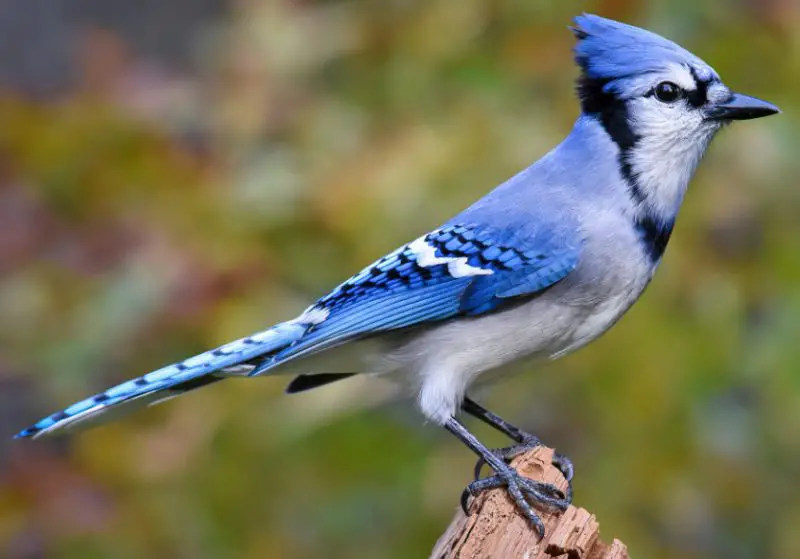
The Blue Jay is a bold and intelligent songbird with bright blue plumage, a white face, and a black necklace-like marking across the throat. They have a prominent crest, black barring on the wings and tail, and strong, stout bills. Measuring 9 to 12 inches in length with a wingspan of 13 to 17 inches, Blue Jays are among the larger backyard birds.
Their vocalizations are varied, including loud “jay-jay” calls, musical whistles, and even mimicked hawk cries. They are known for their intelligence, problem-solving skills, and food caching behavior. Blue Jays build cup-shaped nests in tree branches, laying 3 to 6 eggs per clutch. Both parents share nesting duties and aggressively defend their territory.
In Indiana, Blue Jays are widespread year-round residents. They inhabit woodlands, suburban neighborhoods, and parks. These adaptable birds are frequent visitors to feeders, especially those offering peanuts, sunflower seeds, or suet. Their bright coloring and raucous calls make them both loved and sometimes annoying backyard characters.
Common Grackle (Quiscalus quiscula)
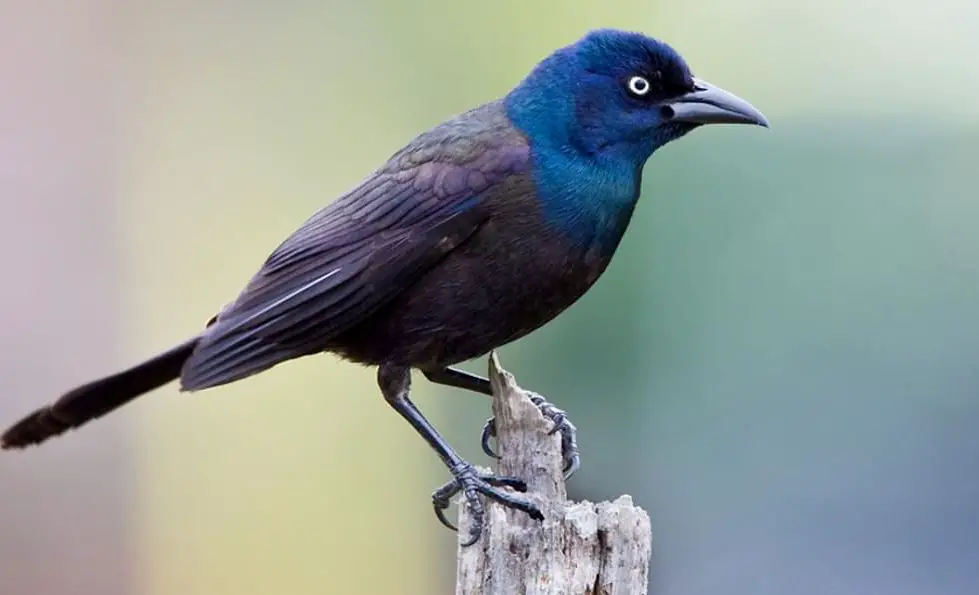
The Common Grackle is a large, glossy blackbird with an iridescent blue-purple sheen on the head and bronze-toned body. They have long, keel-shaped tails and piercing yellow eyes. Measuring 11 to 13 inches long with a wingspan of 14 to 18 inches, they have a longer, lankier appearance compared to other blackbirds.
Their song is a harsh, creaky series of notes, often likened to a rusty gate. Common Grackles are social birds and may form large flocks, especially outside the breeding season. They nest in dense shrubs, trees, or even building ledges, constructing bulky nests of grass and twigs. Females lay 4 to 5 eggs and raise the young with help from the male.
In Indiana, Common Grackles are widespread and abundant, found in open woodlands, farmlands, suburbs, and wetlands. They are frequent visitors to bird feeders and sometimes dominate feeding stations. Though often overlooked due to their boldness, their iridescent plumage can be quite striking in sunlight.
FAQs about Blue Birds in Indiana
What are some common blue birds found in Indiana?
Indiana hosts a variety of blue birds including the Eastern Bluebird, Blue Jay, Indigo Bunting, Tree Swallow, and Cerulean Warbler, among others. These species vary in size, habitat preferences, and behaviors, offering birdwatchers a diverse range of blue-hued birds to enjoy.
Where can I typically see blue birds in Indiana?
Blue birds in Indiana can be found in a range of habitats such as open fields, woodlands, wetlands, suburban parks, and near bodies of water. For example, Eastern Bluebirds prefer open meadows and farmland with nest boxes, while Belted Kingfishers are usually seen along rivers and lakes.
When is the best time to observe blue birds in Indiana?
Most blue bird species in Indiana are migratory or summer residents, making spring through early fall the best time to observe them. Some species, like Blue Jays and Great Blue Herons, can be seen year-round, while others, such as Mountain Bluebirds, appear occasionally during migration.
How can I attract blue birds to my backyard?
Providing suitable habitat such as native plants, nesting boxes, and fresh water can attract blue birds to your yard. For instance, installing bluebird nest boxes encourages Eastern Bluebirds, while planting berry-producing shrubs can attract Indigo Buntings and Blue Jays.
What do blue birds in Indiana typically eat?
Diet varies among blue bird species; many feed on insects and flying bugs like swallows, while others such as Blue Jays and Common Grackles eat seeds, nuts, fruits, and occasionally small animals. Providing a variety of natural food sources helps support diverse blue bird populations.
Are any blue bird species in Indiana threatened or declining?
Yes, some species like the Cerulean Warbler have experienced significant population declines due to habitat loss and fragmentation. Conservation efforts focused on protecting mature forests and creating suitable nesting habitats are crucial for their survival.
Can I help conserve blue birds in Indiana?
Absolutely! Supporting local conservation programs, maintaining bird-friendly habitats, avoiding pesticide use, and participating in citizen science projects like bird counts all help protect blue birds in Indiana and their ecosystems.

